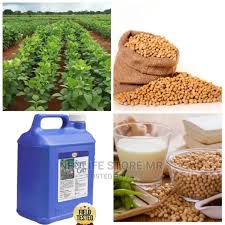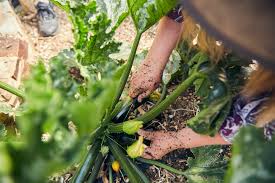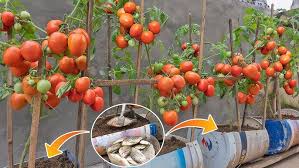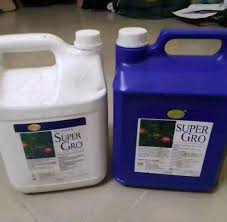Super Gro on vegetables is a popular growth enhancer that many gardeners and farmers turn to for improving the health and yield of their crops. This powerful liquid fertilizer is designed to stimulate growth and enhance nutrient absorption, making it an excellent choice for cultivating various vegetables. Its unique formulation contains essential nutrients, vitamins, and minerals that promote robust plant development, leading to healthier vegetables and higher yields.
One of the key advantages of using Super Gro is its ability to improve root development. Strong roots are vital for nutrient and water uptake, and Super Gro provides the necessary support to enhance root growth. This results in healthier plants that are better equipped to withstand environmental stressors such as drought or pests. When vegetables have a well-established root system, they can absorb nutrients more efficiently, which is crucial for achieving optimal growth and productivity.
In addition to promoting root health, Super Gro also boosts overall plant vigor. The nutrients in Super Gro are readily available for plants to absorb, allowing them to grow faster and produce more. This is particularly beneficial for vegetables that require quick maturation, such as lettuce and radishes. By using Super Gro, gardeners can significantly reduce the time it takes for their vegetables to reach harvest size, making it an ideal choice for those looking to maximize their growing seasons.
Another best practice when using Super Gro on vegetables is to apply it at the right time and in the correct manner. Timing is critical for achieving the best results, and it is recommended to use Super Gro during the early stages of plant growth.
This helps establish a strong foundation for the plants as they develop. Additionally, proper dilution is essential. Super Gro should be mixed with water according to the instructions on the label to ensure the right concentration. Over-fertilization can lead to nutrient burn, negatively affecting plant health and yield.
Using Super Gro in conjunction with proper watering practices can further enhance its effectiveness. Ensuring that vegetables receive adequate moisture will help facilitate nutrient uptake. It is essential to monitor soil moisture levels and adjust watering schedules accordingly. Applying Super Gro after a rainfall or during cooler parts of the day can also reduce the risk of evaporation and nutrient loss, leading to more effective nutrient absorption.
Another important consideration when using Super Gro is to combine it with other best agricultural practices. Crop rotation, for instance, can help prevent nutrient depletion and maintain soil health.
Integrating organic matter, such as compost, can also improve soil structure and fertility, providing a balanced growing environment for vegetables. By incorporating Super Gro into a holistic approach to vegetable gardening, growers can create an ideal ecosystem that supports healthy plant growth.
Super Gro and Its Benefits

1. Nutrient-Rich Composition: Super Gro is designed with a balanced mix of macronutrients (nitrogen, phosphorus, potassium) and micronutrients (iron, magnesium, calcium) that support comprehensive plant growth and development.
2. Enhanced Growth Rates: By promoting stronger root systems and healthier foliage, Super Gro can lead to faster growth rates in vegetables, allowing for earlier harvests and increased productivity.
3. Improved Crop Yield: The application of Super Gro can significantly increase vegetable yields, helping farmers maximize their output and profitability from each planting.
4. Stress Resistance: Plants treated with Super Gro tend to exhibit greater resilience to environmental stressors such as drought, disease, and nutrient deficiencies, resulting in healthier crops.
5. Soil Health Improvement: Regular use of Super Gro contributes to improved soil structure and fertility, encouraging beneficial microbial activity that enhances nutrient availability.
6. Cost-Effective Farming: With its ability to improve nutrient uptake and efficiency, Super Gro reduces the need for multiple fertilizers, leading to lower input costs and a better return on investment.
Choosing the Right Vegetables for Super Gro Application
1. Leafy Greens: Vegetables like spinach, lettuce, and kale respond well to Super Gro, benefiting from its nutrient-rich formula that promotes lush foliage and vigorous growth.
2. Fruiting Vegetables: Crops such as tomatoes, peppers, and cucumbers thrive with Super Gro application, as the fertilizer supports fruit development and enhances overall yield.
3. Root Vegetables: Vegetables like carrots, potatoes, and radishes can benefit from the nutrient boost provided by Super Gro, leading to better root formation and size.
4. Brassicas: Cabbage, broccoli, and cauliflower are also good candidates for Super Gro, as the fertilizer can enhance their growth rate and improve disease resistance.
5. Herbs: Culinary herbs such as basil, parsley, and cilantro respond positively to Super Gro, which helps them grow vigorously and develop robust flavors.
Optimal Timing for Applying Super Gro
1. Pre-Planting: Incorporating Super Gro into the soil before planting can provide an initial nutrient boost, helping to create a fertile environment for seed germination and root development.
2. During Early Growth Stages: Applying Super Gro shortly after seedlings emerge or when plants are young can support early growth, helping them establish strong roots and foliage.
3. Before Flowering and Fruiting: A timely application of Super Gro just before the flowering or fruiting stage can enhance nutrient availability, resulting in larger fruits and higher yields.
4. After Harvest: Using Super Gro after harvesting can help prepare the soil for the next planting season, replenishing nutrients that may have been depleted during the previous crop cycle.
Proper Dilution Techniques for Super Gro
1. Reading the Label: Always refer to the manufacturer’s instructions for specific dilution ratios for liquid Super Gro, as concentrations can vary between products.
2. Measuring Accurately: Use a measuring cup or graduated cylinder to ensure accurate measurement of Super Gro and water. For example, a common dilution ratio may be 1 part Super Gro to 10 parts water.
3. Mixing Thoroughly: In a clean container, combine the measured Super Gro with the appropriate amount of water. Stir or shake the mixture thoroughly to ensure it is well mixed and the nutrients are evenly distributed.
4. Application Method: Use the diluted Super Gro solution for foliar spraying or as a soil drench, ensuring even coverage over the plants or soil to maximize nutrient absorption.
5. Avoiding Over-Dilution: While dilution is essential, avoid excessively diluting Super Gro, as this can reduce its effectiveness. Stick to the recommended ratios for best results.
Application Methods for Even Distribution
1. Foliar Spraying: Mix the diluted Super Gro solution in a sprayer and apply it directly to the leaves of the plants, ensuring even coverage for quick nutrient absorption through the foliage.
2. Soil Drenching: Pour the diluted Super Gro solution directly onto the soil around the base of the plants. This method allows the nutrients to penetrate the root zone where they can be easily taken up by the roots.
3. Drip Irrigation System: Incorporate Super Gro into a drip irrigation system to deliver nutrients directly to the root zone, promoting efficient uptake while minimizing waste and runoff.
4. Fertigation: Apply Super Gro through a fertilization system that combines water and fertilizer, providing a consistent nutrient supply to the plants while ensuring even distribution across the field.
5. Seed Treatment: Soak seeds in a diluted Super Gro solution before planting to enhance germination rates and ensure that seedlings start with an adequate nutrient supply.
Read Also: 18 Medicinal Health Benefits Of Anamirta cocculus (Indian Fishberry)
Monitoring Soil Health Before Application

1. Soil Testing: Conduct a comprehensive soil test to assess nutrient levels, pH, and organic matter content, providing a baseline for determining the need for Super Gro application.
2. Assessing Soil Texture: Evaluate soil texture (sand, silt, clay) to understand water retention and drainage characteristics, which can influence nutrient availability and application methods.
3. Checking Moisture Levels: Measure soil moisture levels before applying Super Gro to ensure that the soil is neither too dry nor waterlogged, which can affect nutrient absorption.
4. Evaluating Organic Matter: Monitor the organic matter content of the soil, as higher levels can enhance nutrient retention and improve the effectiveness of Super Gro applications.
5. Observing Microbial Activity: Assess the presence of beneficial soil microbes through visual inspection or soil testing, as a healthy microbial community is essential for nutrient cycling and uptake.
Frequency of Super Gro Application
1. Initial Application: Apply Super Gro before planting to enrich the soil, ensuring that the plants have access to nutrients from the start.
2. During Growing Season: Reapply Super Gro every 3-4 weeks during the growing season, particularly during critical growth stages (e.g., flowering and fruiting) to maintain nutrient levels.
3. After Heavy Rain: Consider an additional application of Super Gro after heavy rainfall events, as excessive rain can leach nutrients from the soil, necessitating replenishment.
4. During Transplanting: When transplanting seedlings, apply Super Gro to the planting hole to give the young plants an extra nutrient boost during their adjustment period.
5. End of Growing Season: Apply Super Gro after harvest to prepare the soil for the next planting cycle, helping to replenish nutrients that were depleted by the previous crop.
Signs of Nutrient Deficiency in Vegetables
1. Yellowing Leaves: A common sign of nitrogen deficiency is yellowing leaves, particularly older leaves, indicating that the plant lacks essential nitrogen for chlorophyll production.
2. Stunted Growth: Insufficient nutrients can result in slow or stunted growth, where plants appear smaller than expected for their age and show reduced vigor.
3. Poor Fruit Development: If vegetables fail to produce fruits or if the fruits are small and deformed, this may indicate a deficiency in key nutrients like phosphorus or potassium.
4. Leaf Curling or Wilting: Deficiencies in calcium or magnesium can cause leaf curling, wilting, or tip burn, indicating that the plant is struggling to maintain its structural integrity.
5. Dark Green or Purple Tints: A lack of phosphorus may lead to dark green or purple tints on the leaves, especially on the undersides, which can indicate stress from insufficient nutrient availability.
Integrating Super Gro with Other Fertilizers
1. Balanced Nutrient Approach: Combine Super Gro with organic fertilizers (like compost or manure) to create a balanced nutrient profile, providing both macro and micronutrients essential for plant growth.
2. Compatibility Check: Before mixing, ensure that the other fertilizers are compatible with Super Gro to avoid chemical reactions that could reduce nutrient availability or harm plants.
3. Layered Application: Consider applying Super Gro separately from chemical fertilizers in layers, allowing for controlled release of nutrients without overwhelming the plants.
4. Timing Coordination: Apply Super Gro and other fertilizers at different growth stages to align with the plants’ nutrient needs, enhancing uptake efficiency while preventing nutrient lockout.
5. Foliar and Soil Mix: Use Super Gro as a foliar spray alongside granular fertilizers; this dual approach maximizes nutrient absorption through both leaf surfaces and root zones.
Watering Practices After Super Gro Application
1. Initial Watering: Water the plants lightly after applying Super Gro to help activate the nutrients and ensure they are accessible to the plant roots without causing runoff.
2. Schedule Regular Watering: Maintain a consistent watering schedule to keep the soil moist but not saturated, allowing for steady nutrient absorption and reducing the risk of nutrient leaching.
3. Avoid Overwatering: Monitor soil moisture levels to prevent overwatering, which can wash away nutrients and lead to poor plant health, particularly after Super Gro application.
4. Adjust for Weather Conditions: Modify your watering practices based on weather conditions; increase watering during dry spells and reduce frequency during rainy periods to maintain optimal soil moisture levels.
5. Mulching: Consider applying a layer of mulch around the plants after watering to retain moisture, reduce evaporation, and minimize the need for frequent watering.
Tips for Reducing Runoff and Soil Erosion
1. Contour Planting: Use contour planting techniques to create natural barriers that slow down water flow, reducing runoff and soil erosion on sloped fields.
2. Plant Cover Crops: Implement cover crops during the off-season to protect the soil, improve its structure, and prevent erosion while enhancing nutrient availability for the next crop.
3. Establish Vegetative Buffers: Create vegetative buffer strips along waterways to trap sediments and nutrients, preventing them from entering water systems and reducing soil erosion.
4. Use Terracing: On hilly terrain, build terraces to create flat areas for planting, which can significantly reduce soil erosion and runoff while improving water retention.
5. Apply Organic Matter: Incorporate organic matter such as compost or well-rotted manure into the soil to improve its structure, increase water retention, and enhance its resistance to erosion.
Read Also: Poultry Disease Prevention and Management
Harvesting Vegetables Grown with Super Gro

1. Timing the Harvest: Harvest vegetables at their peak ripeness for the best flavor and nutritional quality, paying attention to each variety’s specific harvesting guidelines.
2. Gentle Handling: Handle harvested vegetables gently to avoid bruising and damage, which can reduce shelf life and quality, especially for those grown with nutrient-rich Super Gro.
3. Use Proper Tools: Employ sharp, clean tools for cutting to ensure a clean harvest that minimizes plant stress and helps maintain the integrity of the remaining plants.
4. Clean Post-Harvest: Clean the harvested vegetables promptly to remove dirt and residues, which is particularly important when using fertilizers like Super Gro to ensure food safety.
5. Monitor Storage Conditions: Store harvested vegetables in appropriate conditions (cool, dry, and dark) to maintain freshness and prolong shelf life, especially after nutrient enhancement.
Do you have any questions, suggestions, or contributions? If so, please feel free to use the comment box below to share your thoughts. We also encourage you to kindly share this information with others who might benefit from it. Since we can’t reach everyone at once, we truly appreciate your help in spreading the word. Thank you so much for your support and for sharing!
Read Also: How To Fix a Garbage Disposal Jam
Frequently Asked Questions
We will update this section soon.

